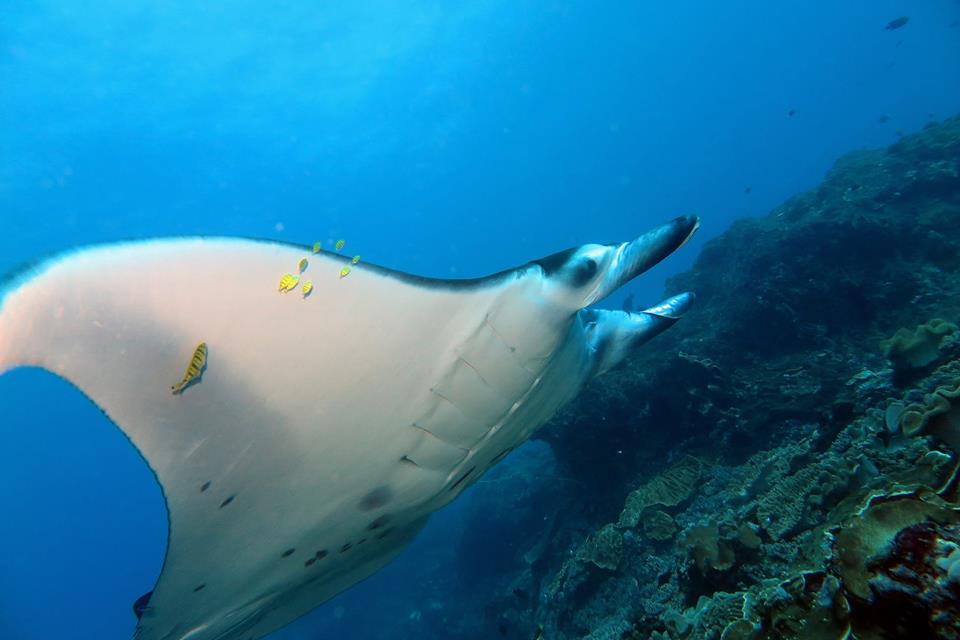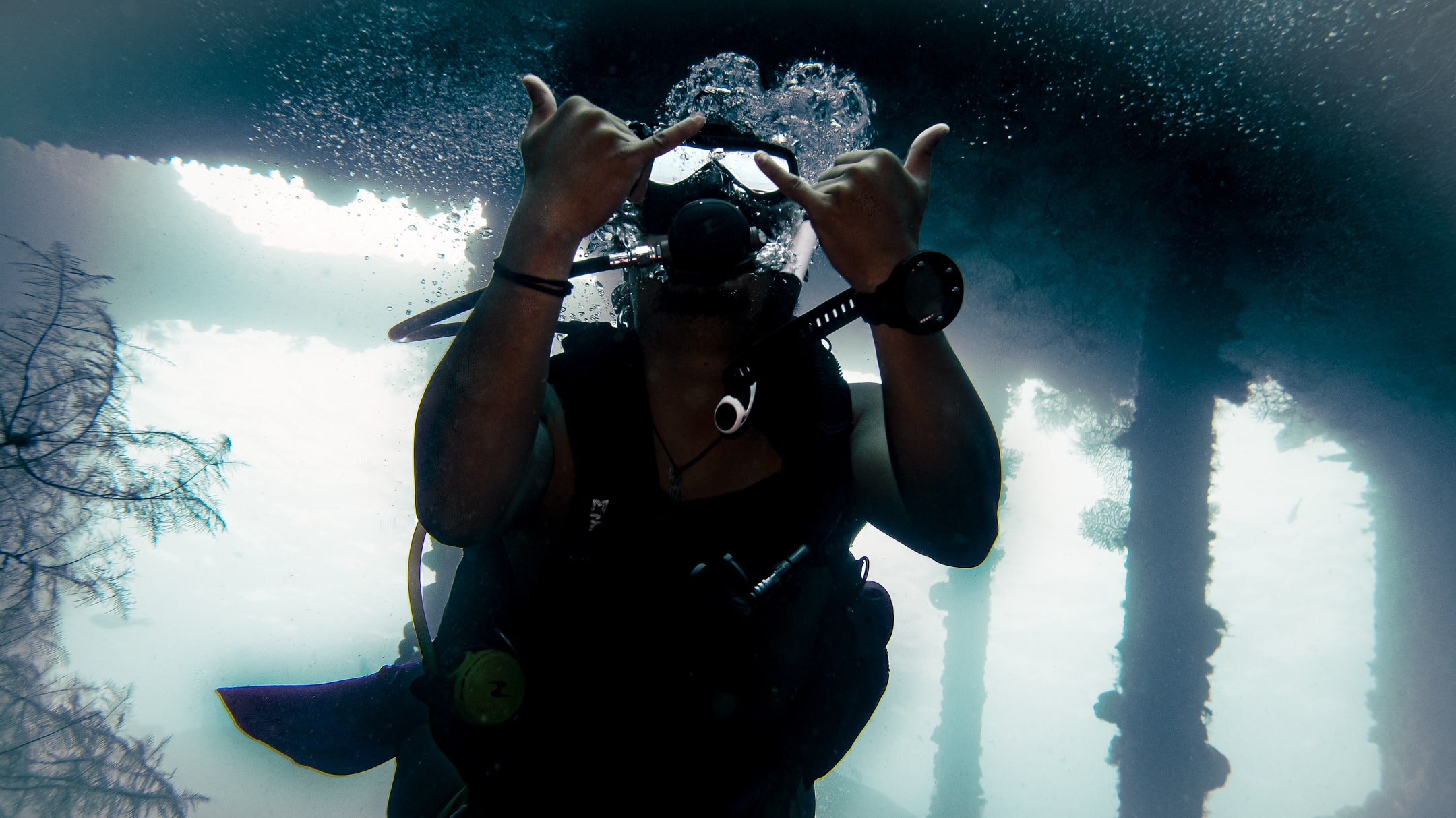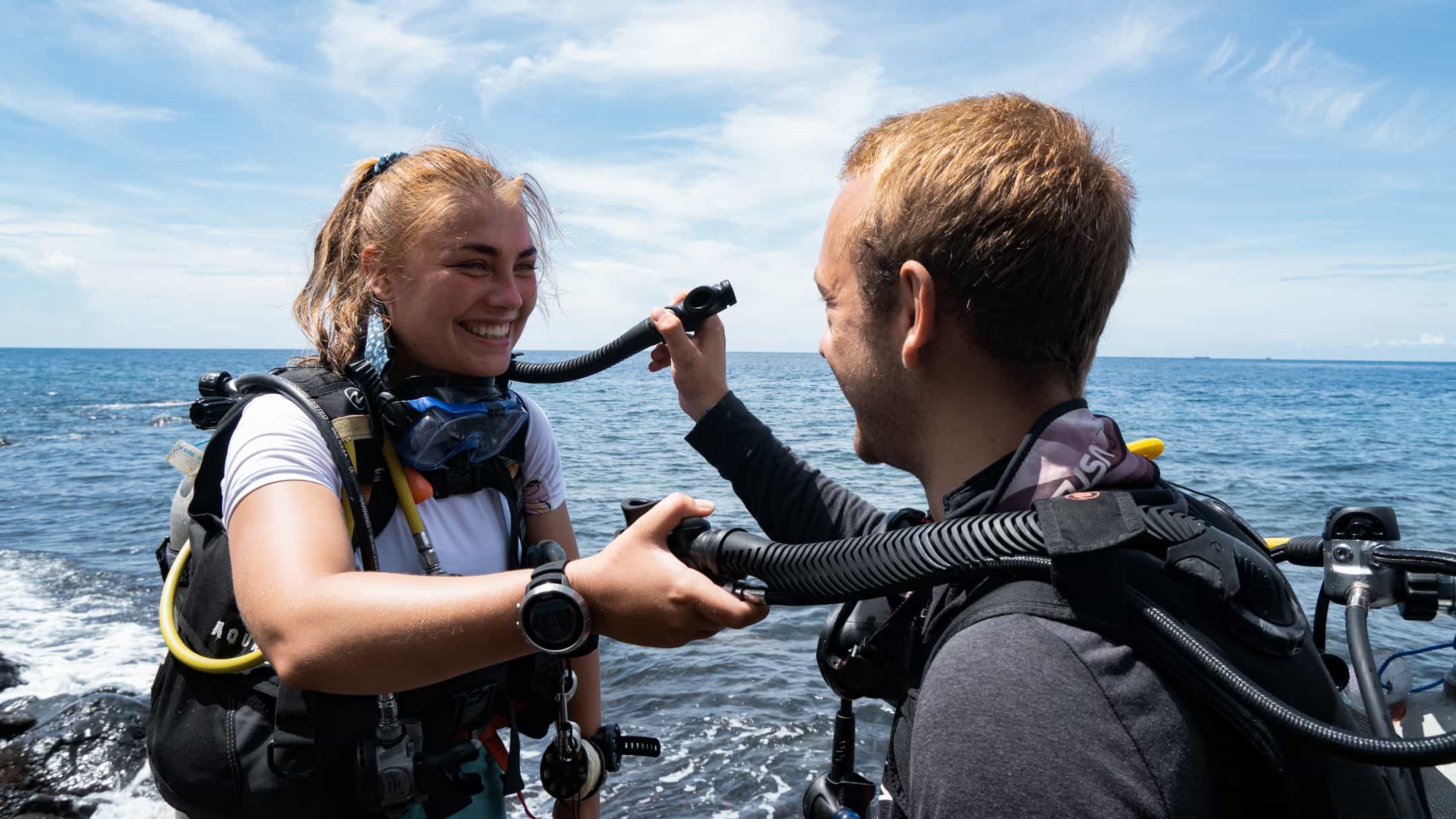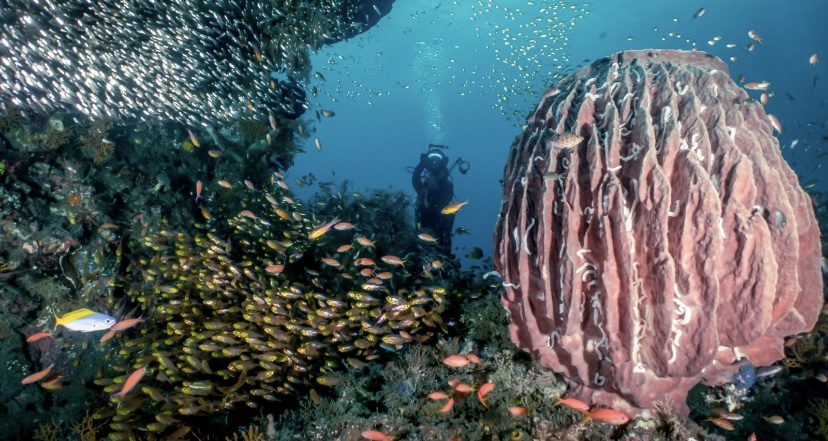Tulamben, Sanur, Amed.. None of these dives sites is as popular as Nusa Penida having the chance to meet magic Manta Rays.
This impressive species can become 5 to 9 meters long (including their tail), whereby their span can amount up to 7 meters. The females are word- for- word the more powerful gender, because they grow bigger than male Manta Rays.
Bali posses the second- largest species of Rays:” The Reef Manta” (Manta alfredi), which is smaller than the Oceanic Manta Ray. Living in shallow water along the coastal reefs, the Reef Manta feels comfortable in subtropical, tropical as well as temperate oceans and can live up to 25 years. What is quite surprising, is the birth rate of a Manta Ray. In comparison to other fish they deliver only every 2,5 years. They spend the majority of their time in cleaning stations (special sectors of a reef) where small cleaning fish clean them by eating parasites, dead skin and bacteria off of their skin. Did you know that Mantas have the biggest brain of all fish and that they are considered as very intelligent?
With a bit of luck you’ll have the chance to see this unique animal, floating quietly through the water on “Manta Point” in Nusa Penida. Even though you are not diving, grab your fins and start your snorkel adventure to look for the gentle giant. Enthusiastic comments describe their encounter as “magic”, “unforgettable” and swarm of their curiosity and at the same time also about their calm manner.
It is important to emphasize that this species does not represent any danger to humans, they nourish themselves from plankton and little fish. In contrast to other kind of Rays, this smooth animal is not armed with a poison sting. Since they are pretty big and only sharks belong to their natural predators. And as is so often the case, their biggest enemy are still the humans, who abuse their gills producing Chinese medicine. Unfortunately many Reef Mantas are taken as by catch or just die painfully in fishing nets. Therefore the livestock of Manta Rays experiences a decline due to fishing, effects of climate change and habitat degradation.
Facing the threat to these species, IUCN (International Union for Conservation of Nature) ranked the livestock of the Reef Mantas as “Vulnerable”.



